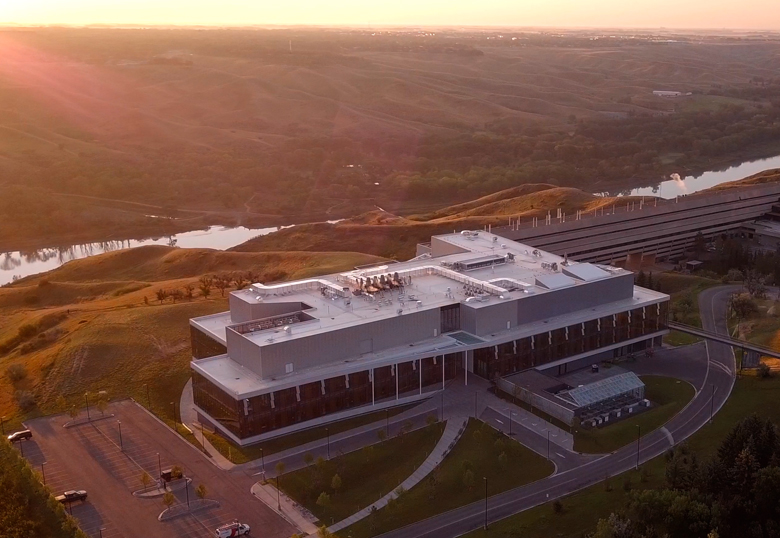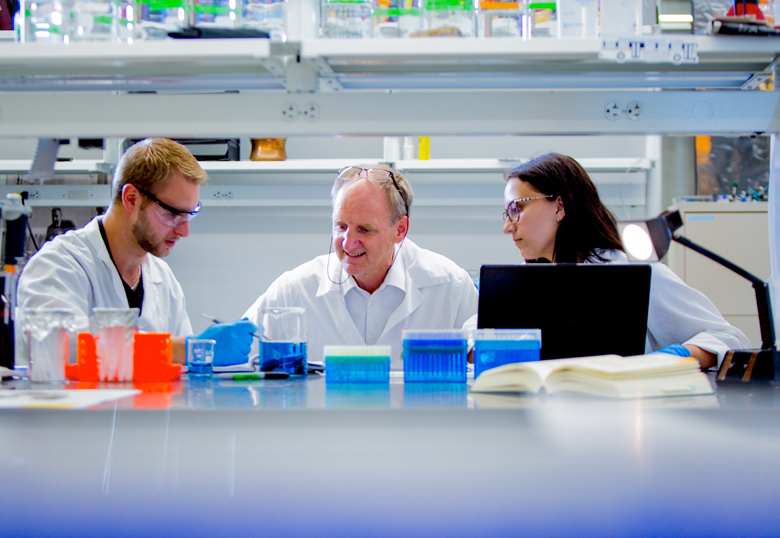A new era in scientific research and education has dawned with today’s official opening of the University of Lethbridge’s $280-million Science Commons.
The spectacular facility, which brings together the departments of Chemistry & Biochemistry, Biological Sciences, Neuroscience, Physics & Astronomy and Psychology, is designed to foster transdisciplinary research by providing exceptional opportunities for collaboration and discovery.

At 38,500 sq. metres, it is the largest development on the U of L campus since the original construction of University Hall began in 1969.
“The history of the University of Lethbridge is steeped in a tradition of community visionaries coming together to make the improbable possible, just as they did in establishing the University over 50 years ago,” says Dr. Mike Mahon, U of L president and vice-chancellor. “It took a great community effort to bring the dream of Science Commons together as well. From our incredible faculty and staff, to alumni and donors, our Board of Directors and Senate and all our partners throughout southern Alberta, Science Commons will stand as a testament to visionary thought and perseverance and represent the very best our University has to offer.”
Alberta Premier Jason Kenney says the addition of Science Commons at the U of L is a boon for the province.
“On behalf of the Government of Alberta, I congratulate the University of Lethbridge on the opening of Science Commons,” says Kenney “This facility will help thousands of students to learn, innovate and collaborate for decades to come. This project will receive $260 million from Alberta taxpayers, underscoring our province’s commitment to scientific progress, which is critical to our long-term prosperity.”
Demetrios Nicolaides, Alberta’s Minister of Advanced Education, adds that the province’s investment will bolster intellectual capital and strengthen the economy.
“The University of Lethbridge has an outstanding reputation for discovery research. The addition of this state-of-the-art facility will further attract international students and inspire more innovation, creativity and growth,” says Nicolaides. “A modern university research centre brings top talent and business to Alberta which builds the workforce and supports a stronger economy.”
Setting the stage for the next 50 years of scientific discovery and education at the U of L, Science Commons is a facility where science transcends disciplines. Large, flexible lab spaces designed with a shared-space ideology encourage collisions among researchers with diverse backgrounds and approaches. Researchers at all stages of their careers, from postdocs to doctoral, masters and undergraduate students and from kindergarten to Grade 12 will come together, sparking conversations and igniting discovery.

“From the outset, the vision of our faculty members was to stay true to our liberal education roots. The key to the success of this facility is to foster a culture of discovery and innovation that is outward-facing, responsive to societal needs and inspires the next generation,” says Dr. Matthew Letts, interim dean for the Faculty of Arts & Science. “Science Commons will build upon our collaborative approach to research and our experiential approach to learning.”
The facility also creates greater opportunity for the University to build on its relationships with southern Alberta industry partners.
“The U of L has long been an economic driver in our community and Science Commons will expand our ability to foster partnerships as we translate knowledge from the lab to industry,” adds Mahon.
Dr. Ute Kothe, a researcher in the Department of Chemistry & Biochemistry, says the world-class research already being conducted at the U of L will be further enhanced by the amenities within Science Commons.
“This building will draw scientists to Lethbridge, and that will really ensure we are bringing the best minds to Lethbridge to conduct world-class research here,” says Kothe. “They will work in state-of-the-art facilities and they will learn to work collaboratively because this is really the philosophy of the U of L — to bring people together and cross disciplinary boundaries and generate the best ideas.”
With glass the defining design feature of Science Commons, it embodies the concept of science on display, serving as an open invitation to the public to see the world’s brightest minds as they work to solve today’s greatest challenges. Further, the facility offers dedicated spaces that will double the University’s capacity for science outreach activities — a true science centre for southern Alberta.
“What makes Science Commons so extraordinary is by the manner in which the architecture and the facility have been structured to foster research, teaching, collaborative space, public space, all in a domain that actually brings together multidisciplinary researchers and the public at large,” says Dr. Fred Wrona, chief scientist, Alberta Environment and Parks, Government of Alberta.
Students are taking notice. New Fall 2019 registrants to Bachelor of Science (BSc) programs offered by the Faculty of Arts & Science are up over 23 per cent from last year, while total BSc registrants are up nearly 10 per cent.
“The open concept allows for a lot of collaboration between different labs, so I’m excited to learn with new tools and new techniques that I might not have had access to before,” says Catrione Lee, a fourth-year biochemistry student.
Already one of the country’s leading research universities, Science Commons positions the U of L at the forefront of science research and education, inspiring the next generation of research scientists and setting the stage for an unprecedented era of discovery.
Dr. Hans-Joachim Wieden, Alberta Innovates Strategic Chair in RNA Bioengineering, Tier I Board of Governors Research Chair in Biomolecular Design and Function and the founding director of the Alberta RNA Research and Training Institute (ARRTI), is succinct in his appraisal of Science Commons.
“I’m convinced that this facility is the best facility for research and science education in Canada.”
UPDATE
Just prior to the offical opening ceremony, Science Commons was blessed and elder Francis First Charger bestowed the Blackfoot name Isttaniokaksini on the facility. Its meaning refers to deep knowledge and awareness rising out of the unknown into the known.


